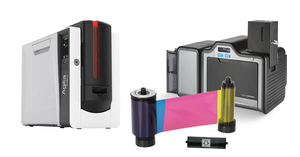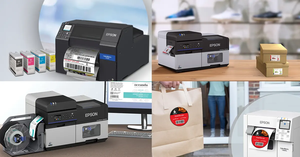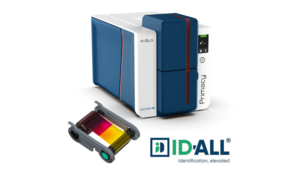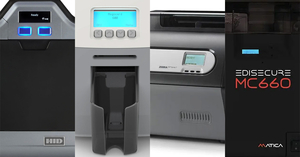How to Use the Evolis ID Card Printer Series for your ID Badge Needs
Evolis is a printer manufacturer that makes printers used in printing ID badges of different types. Some of the different types of cards you can print are standard ID cards, driver’s licenses, bank cards and access badges and the like. A badge typically holds information about its owner, such as name, a photograph and perhaps statistical information such as height, weight and hair color, etc. The purpose of an ID badge is to identify the individual.
PVC Cards
The types of cards used are the standard type of cards used by most printer manufacturers. These cards are known as PVC (yes, the same PVC used for piping), but are more commonly known as plastic cards. Since they are smooth to the touch, PVC Cards require printing via a method known as thermal transfer printing, which uses a printer part known as a ribbon to apply either a colored or monochrome layer. Contrast this with your standard inkjet printers, which place the ink directly on the page. Thermal printing is necessary since the heating process causes the ink to remain glued to the surface, which is not an issue with printing on paper.
When printing in color, the heat turns the ink layer into gas that reverts to its original state on the card’s surface, a process known as sublimation, or dye sublimation. Evolis printers can print in both monochrome and color.
Bar Code Application
Bar codes are perhaps the most basic feature of plastic cards and are used in many places, such as in stores that sell merchandise branded with bar codes. It is therefore not limited only to cards, but to a variety of plastic surfaces that require bar code identification. A bar code works by creating highly distinct black and white areas that are read by a photosensitive electronic scanner. When the card is passed under the light emitted from the scanner, the scanner detects which light is absorbed by the black areas and which is reflected by the white areas, a pattern which registers as a product or item. We’ve all been in line at the grocery store only to find that the cashier has to scan our item over and over again while people behind us are getting impatient. A scanner has a hard time reading a bar code when the lines are not printed sharply or evenly.
Rewritable Printing
Rewritable printing is to printers what rewritable CD’s are to CD burners. Any images printed on a rewritable card can be erased by being exposed to heat (230-320° F or 110-160° C). A typical PVC card can go through this process usually up to 500 times.
Lamination
Printing lamination is similar to the standard form of printing, whereby a material such as paper is covered in a protective plastic sheath. In printing, specifically in ID card printing, lamination is used in order protect card images from destruction, either accidental or deliberate. Such damage renders a card used for identification useless, or worst, if a card with an unrecognizable image is lost and found by somebody else, it can lead to identity theft. Evolis offers cards of this type in order to prevent against the types of forgery associated with damaged cards.
Holograms
It is also possible to apply holographic images to PVC cards. Cards with images are typically used by institutions that seek to avoid counterfeiting and forgery, such as banks or facilities that require an age limit for access. Holographic images cannot be duplicated with a standard Xerox machine, scanner or standard inkjet printer, which is why certain organizations opt to use them.
Magnetic Encoding
Magnetic encoding is a black stripe placed on the back of a card, usually bank cards. The particles in the magnetic encoding stripe hold binary information (1’s and 0’s) that a scanner, or reader, encodes when swiped. Evolis makes magnetic encoders that are able to create the magnetic stripes used by financial institutions.
Contact Cards or Smart Cards
Contact cards, also known as Smart Cards, are plastic cards fitted in an internal chip that can hold more than 100 times the amount of data that a magnetic stripe can hold. They are swiped much like a magnetic encoding card and also rewritable.
Contactless Cards
A contactless card is a card that holds information read through the transfer of microwave frequencies from a chip to the laminated plastic card. This mechanization means that the card doesn’t need to be swiped, but just passed nearby the scanning device (between 3-10 cm) and allows for quicker and more efficient access. Contactless cards can be used for a variety of applications, depending on the card model, and is common for access security, data storage and encryption.









